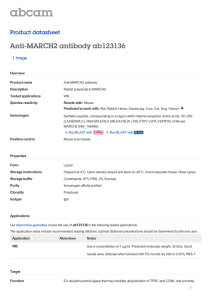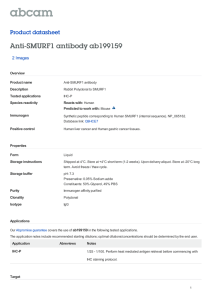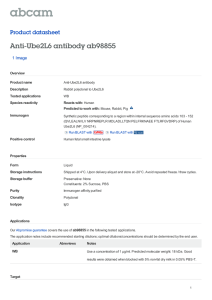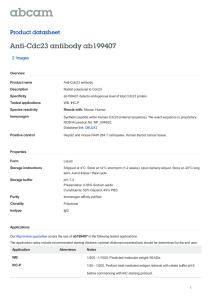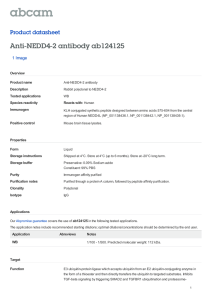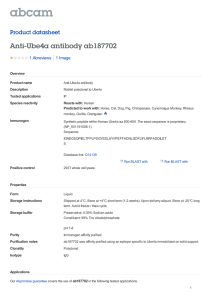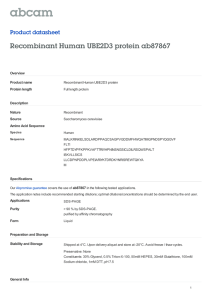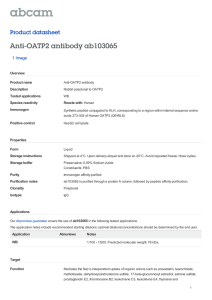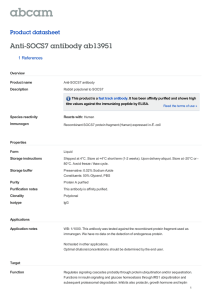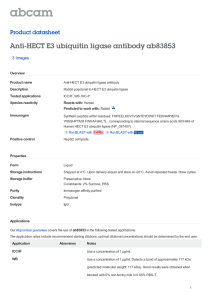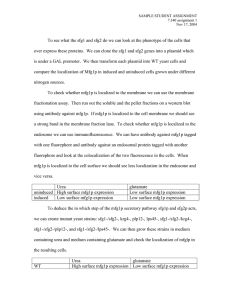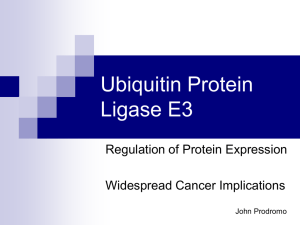Anti-COP1 antibody ab138130 Product datasheet 1 Abreviews 1 Image
advertisement
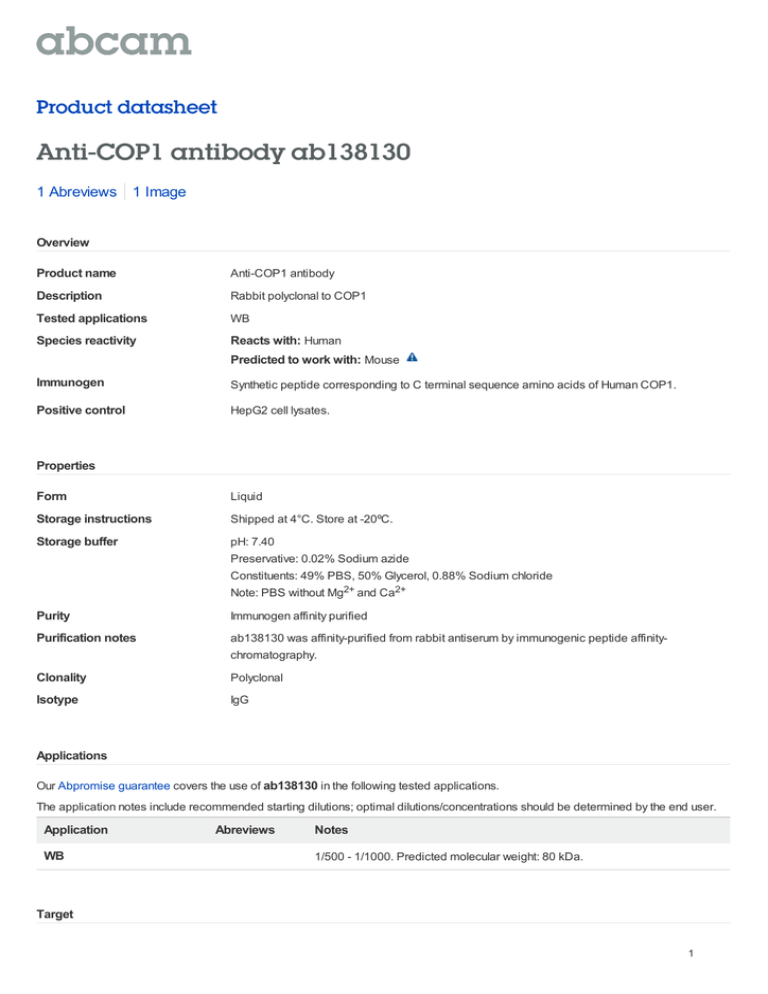
Product datasheet Anti-COP1 antibody ab138130 1 Abreviews 1 Image Overview Product name Anti-COP1 antibody Description Rabbit polyclonal to COP1 Tested applications WB Species reactivity Reacts with: Human Predicted to work with: Mouse Immunogen Synthetic peptide corresponding to C terminal sequence amino acids of Human COP1. Positive control HepG2 cell lysates. Properties Form Liquid Storage instructions Shipped at 4°C. Store at -20ºC. Storage buffer pH: 7.40 Preservative: 0.02% Sodium azide Constituents: 49% PBS, 50% Glycerol, 0.88% Sodium chloride Note: PBS without Mg2+ and Ca2+ Purity Immunogen affinity purified Purification notes ab138130 was affinity-purified from rabbit antiserum by immunogenic peptide affinitychromatography. Clonality Polyclonal Isotype IgG Applications Our Abpromise guarantee covers the use of ab138130 in the following tested applications. The application notes include recommended starting dilutions; optimal dilutions/concentrations should be determined by the end user. Application WB Abreviews Notes 1/500 - 1/1000. Predicted molecular weight: 80 kDa. Target 1 Function E3 ubiquitin-protein ligase that mediates ubiquitination and subsequent proteasomal degradation of target proteins. E3 ubiquitin ligases accept ubiquitin from an E2 ubiquitinconjugating enzyme in the form of a thioester and then directly transfers the ubiquitin to targeted substrates. Involved in JUN ubiquitination and degradation. Directly involved in p53 (TP53) ubiquitination and degradation, thereby abolishing p53-dependent transcription and apoptosis. Ubiquitinates p53 independently of MDM2 or RCHY1. Probably mediates E3 ubiquitin ligase activity by functioning as the essential RING domain subunit of larger E3 complexes. In contrast, it does not constitute the catalytic RING subunit in the DCX DET1-COP1 complex that negatively regulates JUN, the ubiquitin ligase activity being mediated by RBX1. Tissue specificity Ubiquitously expressed at low level. Expressed at higher level in testis, placenta, skeletal muscle and heart. Pathway Protein modification; protein ubiquitination. Sequence similarities Belongs to the COP1 family. Contains 1 RING-type zinc finger. Contains 7 WD repeats. Domain The RING finger domain, in addition to its role in ubiquitination, functions as a structural scaffold to bring two clusters of positive-charged residues within spatial proximity to mimic a bipartite nuclear localization signal (NLS). Cellular localization Nucleus speckle. Cytoplasm. In the nucleus, it forms nuclear speckles. Anti-COP1 antibody images Anti-COP1 antibody (ab138130) at 1/500 dilution + HepG2 cell lysate at 30 µg Predicted band size : 80 kDa Western blot - Anti-COP1 antibody (ab138130) Please note: All products are "FOR RESEARCH USE ONLY AND ARE NOT INTENDED FOR DIAGNOSTIC OR THERAPEUTIC USE" Our Abpromise to you: Quality guaranteed and expert technical support Replacement or refund for products not performing as stated on the datasheet Valid for 12 months from date of delivery Response to your inquiry within 24 hours We provide support in Chinese, English, French, German, Japanese and Spanish Extensive multi-media technical resources to help you We investigate all quality concerns to ensure our products perform to the highest standards If the product does not perform as described on this datasheet, we will offer a refund or replacement. For full details of the Abpromise, please visit http://www.abcam.com/abpromise or contact our technical team. 2 Terms and conditions Guarantee only valid for products bought direct from Abcam or one of our authorized distributors 3
